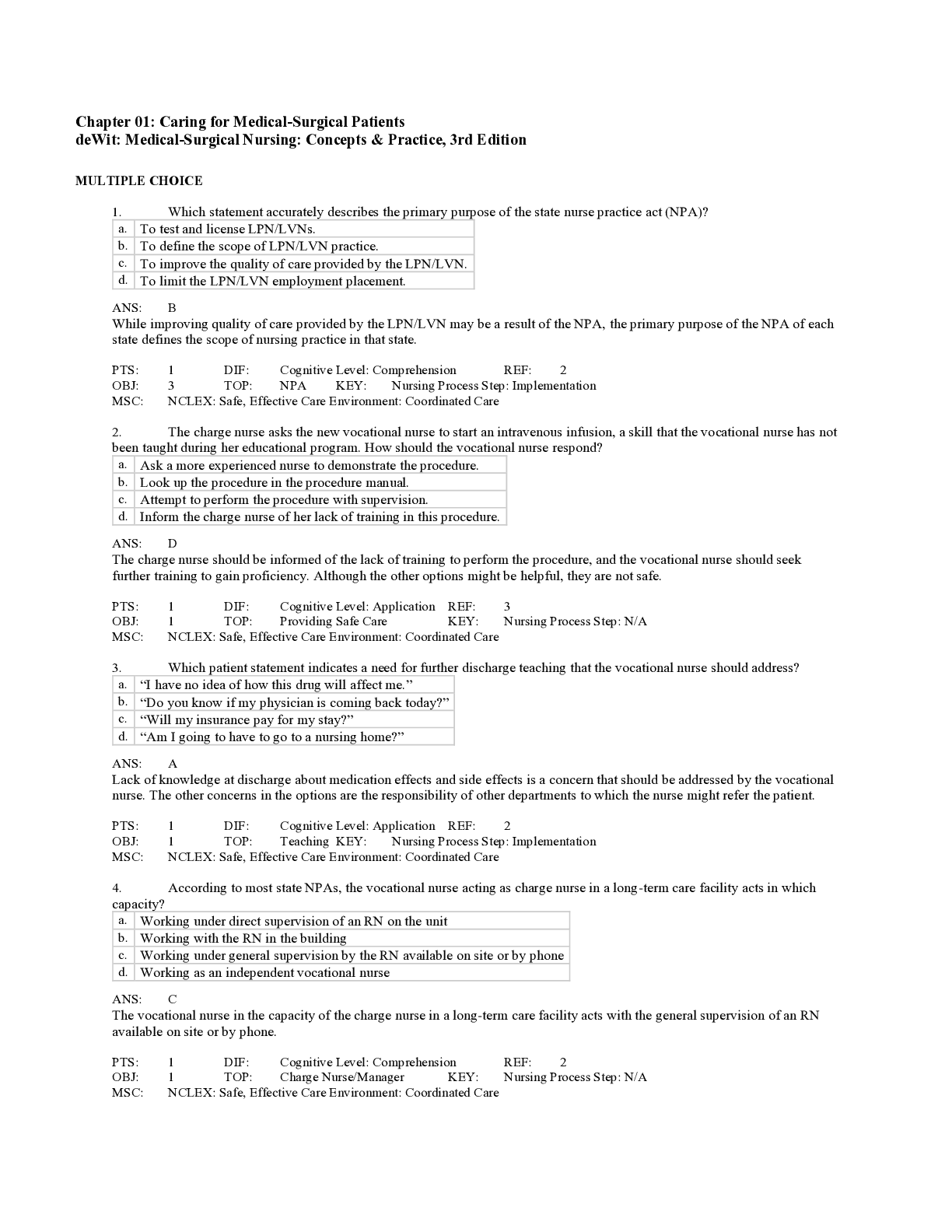*NURSING > MED-SURG EXAM > Chapter 17: Digestive System Disorders Test Bank (All)
Chapter 17: Digestive System Disorders Test Bank
Document Content and Description Below
1. Which of the following cells in the gastric mucosa produce intrinsic factor and hydrochloric acid? a. Parietal cells b. Chief cells c. Mucous cells d. Gastrin cells 2. Which of the followi... ng is the primary site for absorption of nutrients? a. Stomach b. Duodenum c. Ileum d. Ascending colon 3. When highly acidic chyme enters the duodenum, which hormone stimulates the release of pancreatic secretions that contains very high bicarbonate ion content? a. Gastrin b. Secretin c. Cholecystokinin d. Histamine 4. Which of the following breaks protein down into peptides? a. Amylase b. Peptidase c. Lactase d. Trypsin 5. In which structure is oxygenated blood (arterial) mixed with unoxygenated blood (venous) so as to support the functions of the structure? a. Pancreas b. Liver c. Small intestine d. Spleen 6. Which of the following stimulates increased peristalsis and secretions in the digestive tract? a. Sympathetic nervous system b. Vagus nerve c. Increased saliva d. Absence of food in the system 7. Which of the following is contained in pancreatic exocrine secretions? a. Bicarbonate ion b. Hydrochloric acid c. Activated digestive enzymes d. Insulin 8. The presence of food in the intestine stimulates intestinal activity but inhibits gastric activity through the: a. defecation reflex. b. enterogastric reflex. c. vomiting reflex. d. autodigestive reflex. 9. Which of the following processes is likely to occur in the body immediately after a meal? a. Lipolysis b. Ketogenesis c. Gluconeogenesis d. Glycogenesis 10. What does the term gluconeogenesis refer to? a. Breakdown of glycogen to produce glucose b. Conversion of excess glucose into glycogen for storage c. Formation of glucose from protein and fat d. Breakdown of glucose into carbon dioxide and water 11. Normally, proteins or amino acids are required to produce all of the following EXCEPT: a. peptide hormones. b. clotting factors and antibodies. c. cellular energy. d. hemoglobin. 12. Which of the following statements applies to bile salts? a. They give feces the characteristic brown color. b. They are enzymes used to break down fats into free fatty acids. c. They emulsify lipids and lipid-soluble vitamins. d. They are excreted in the feces. 13. The visceral peritoneum: a. lines the abdominal wall. b. hangs from the stomach over the loops of small intestine. c. contains many pain receptors. d. forms the outer covering of the stomach. 14. The early stage of vomiting causes: a. metabolic alkalosis. b. metabolic acidosis. c. increased respirations. d. increased excretion of hydrogen ions. 15. Yellow or greenish stained vomitus usually indicates the presence of: a. bile. b. blood. c. protein. d. bacteria. 16. Small, hidden amounts of blood in stool are referred to as: a. melena. b. occult blood. c. frank blood. d. hematemesis. 17. Severe vomiting can lead to metabolic acidosis because of increased: a. ketones produced. b. CO2 retained in the lungs and kidneys. c. hypovolemia and lactic acid production. d. metabolic rate. 18. Which of the following applies to the act of swallowing? a. It requires coordination of cranial nerves V, IX, X, and XII. b. It is entirely voluntary. c. It is controlled by a center in the hypothalamus. d. It does not affect respiration. 19. What does the defecation reflex require? a. Stimulation by the sympathetic nervous system b. Contraction of the internal anal sphincter c. Coordination through the sacral spinal cord [Show More]
Last updated: 2 years ago
Preview 1 out of 18 pages

Buy this document to get the full access instantly
Instant Download Access after purchase
Buy NowInstant download
We Accept:

Reviews( 0 )
$9.00
Can't find what you want? Try our AI powered Search
Document information
Connected school, study & course
About the document
Uploaded On
Jul 15, 2022
Number of pages
18
Written in
Additional information
This document has been written for:
Uploaded
Jul 15, 2022
Downloads
0
Views
80








